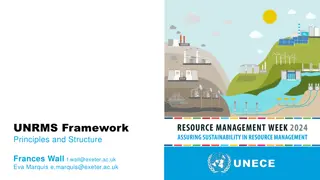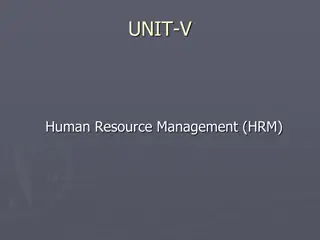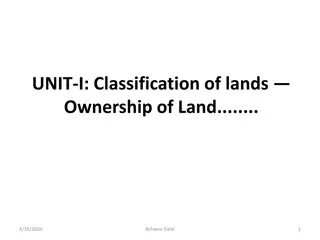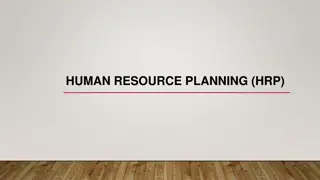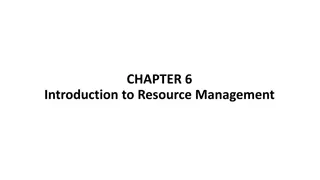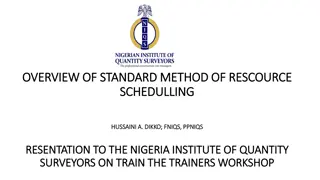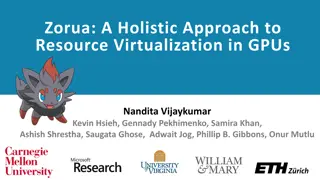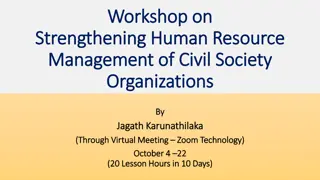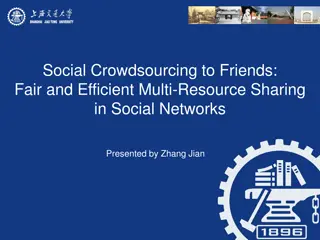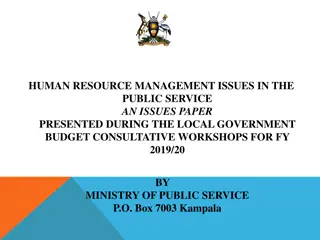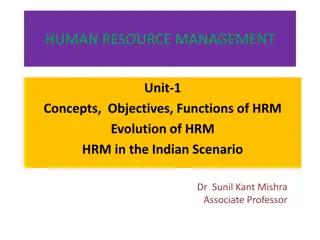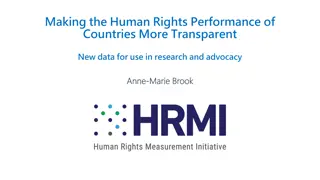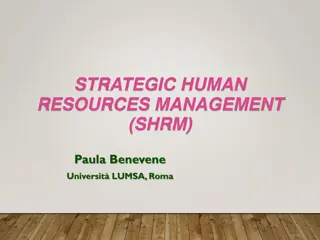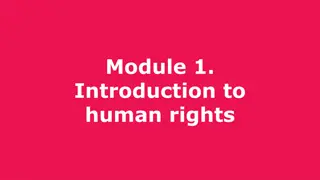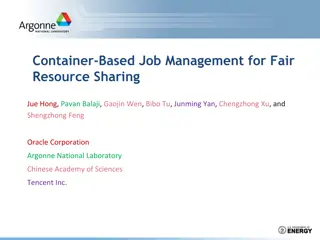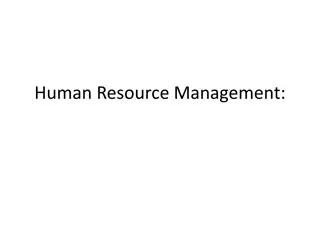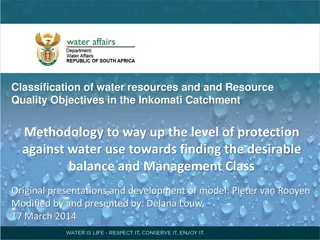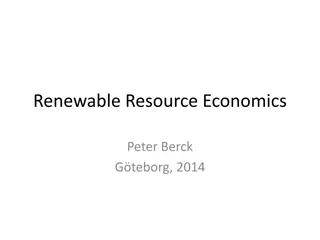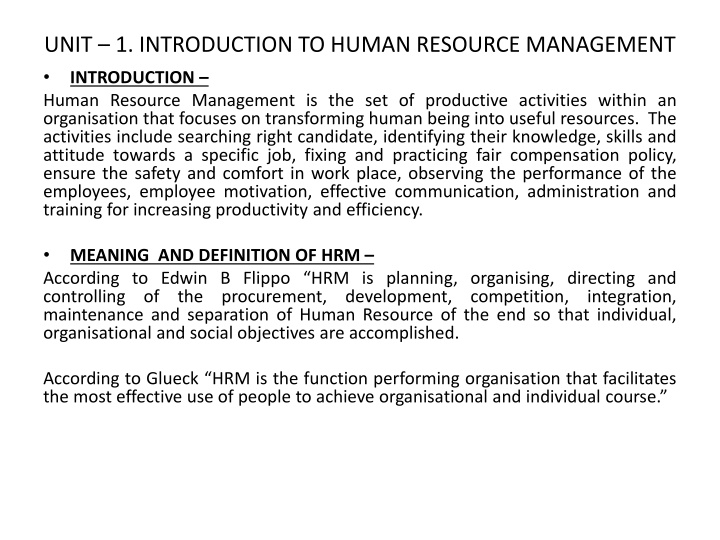
Introduction to Human Resource Management: Activities, Objectives & Differences
"Learn about Human Resource Management activities such as recruitment, training, and performance appraisal, as well as its objectives including personal and societal goals. Explore the distinctions between Personnel Management and HRM for effective organizational development."
Download Presentation

Please find below an Image/Link to download the presentation.
The content on the website is provided AS IS for your information and personal use only. It may not be sold, licensed, or shared on other websites without obtaining consent from the author. If you encounter any issues during the download, it is possible that the publisher has removed the file from their server.
You are allowed to download the files provided on this website for personal or commercial use, subject to the condition that they are used lawfully. All files are the property of their respective owners.
The content on the website is provided AS IS for your information and personal use only. It may not be sold, licensed, or shared on other websites without obtaining consent from the author.
E N D
Presentation Transcript
UNIT 1. INTRODUCTION TO HUMAN RESOURCE MANAGEMENT INTRODUCTION Human Resource Management is the set of productive activities within an organisation that focuses on transforming human being into useful resources. The activities include searching right candidate, identifying their knowledge, skills and attitude towards a specific job, fixing and practicing fair compensation policy, ensure the safety and comfort in work place, observing the performance of the employees, employee motivation, effective communication, administration and training for increasing productivity and efficiency. According to Edwin B Flippo HRM is planning, organising, directing and controlling of the procurement, development, maintenance and separation of Human Resource of the end so that individual, organisational and social objectives are accomplished. MEANING AND DEFINITION OF HRM competition, integration, According to Glueck HRM is the function performing organisation that facilitates the most effective use of people to achieve organisational and individual course.
Features of HRM Human Resource Planning Job Analysis Recruitment and Selection Orientation and Placement Training and Development Performance Appraisal and Job evaluation Employee and Executive Remuneration Motivation Communication Welfare, Safety and Health measures Better Industrial Relations
OBJECTIVES OF HRM Personal objectives Functional objectives Organisational objectives Societal objectives Personal objectives: A] HRM should increase the employee s job satisfaction to fullest extent. B] HRM should also meet the self-actualisation needs of the employees. C] HRM should assist the employees in achieving their personal course. D] HRM should develop and maintain a quality of work life. E] HRM should also communicate HR policies to all the employees.
A] To maintain the HRM departments contribution at a level appropriate to the organisation needs. B] HRM should employ the skills and abilities of the workforce efficiently it should aim at making the people s strength more productive and beneficial to the organisation. C] HRM should aim at providing the organisation with well trained and well- motivated employees. 3. Organisational objectives; A] HR department should recognise in bringing about organisational effectiveness. B] It should focus on the goals of the organisation. C] It should assist the organisation with its primary objective. 4. Societal objective: A] To manage resource in an ethical and in socially responsible manner. B] To ensure compliance with legal or ethical standards. C] To minimise negative impacts of societal demand upon the organisation. . Functional objectives:
DIFFERENCE BETWEEN PERSONNEL MANAGEMENT AND HUMAN RESOURCE MANAGEMENT Personnel Management Personnel Management refers to the administrative discipline of hiring and developing employees so that they become more valuable to the organisation. It includes (i) conducting job analysis (ii) planning personnel needs and recruitment (iii) selecting right people for the job (iv) orienting and training (v) determining and managing wages and salaries (vi) providing benefits and incentives (vii) appraising performance (viii) communicating with all employees at all levels. The nature of relations can be seen through two different perspective views which are Pluralist and Unitary. There is a clear difference between both because in personnel management, the focus is more on individualistic where individual interest is more than group interest. Human Resource Management Human resource management (HRM) refers to the management of an organization s workspace for human resources. It is responsible for the attraction, selection, training, assessment and rewarding of employees while overseeing organisational leadership and culture and ensuring compliance with employmentand labour laws. HRM through a shared vision between management and staff create a corporate vision and mission which are linked to business goals and the fulfilment of mutual interest where the organization s needs are satisfied my employees and employees needs are well-taken care by the organization. Motorola and Seagate are good examples of organisations that belief in the Unitarist approach which also focuses in team management as sees employees as partners I an organization. The distribution of power in personnel management is centralized where the top management has full authority in decision-making where even the personnel managers are not even allowed to give ideas or take part in any decision which involves employees . HRM sees the decentralization of power where the power between top management is shared with middle and lower management groups. This is known as empowerment because employees play an important role together with and HR managers to make collective an mutual decisions, which can benefit bothmanagementand employees. HRM, on the other hand, does not focus on one-time life-long contract where working hours and other terms and conditions of employment are seen as less rigid. Here, it goes beyond the organizations and employees. The new flexible approach encourages employees to choose various ways to keep contributing their skills and knowledge to the organization. Personnel management emphasizes much on leadership style which is very transactional. This style of leadership merely sees the leader as a task- oriented person. This leader focuses more on procedures that must be followed, punishment form non-performance and non-compliance of rules and regulations and put figures and task accomplishments ahead of human factors such as personal bonding, understanding, tolerance and care. Pay policies in personnel management is merely based on skills and knowledge required for the perspective jobs only. The value is based on the ability to perform the task and duties as per the employment contract requirement only. It does not encourage value-added incentives to be paid out. impersonal relationship, trust HRM, on the contrary, encourages organizations to look beyond pay for functional duties. Here, the pay is designed to encourage continuous job performance and improvement which is linked to value-added incentives such as gaining sharing schemes, group profit sharing and individual incentiveplans.
IMPORTANCE OF HRM Importance for the organisation: Good human resource practice helps in attracting and retaining the best people in organisation. In order to make use of latest technology the appointment of right type of person is essential. The right people can be fitted into new jobs properly only if management performs its HR function satisfactorily. Globalisation has increased the size of the organisation who employ thousands of employees in different countries. The performance of the company depends upon the quality of people employed. This has further increased the importance of HR. Human resource planning alerts the organisation to the type of people which it need in short, medium and long run. Importance for the employees: HR stresses are the motivation of employees by providing them various financial and non- financial incentives. Right organisational climate is also stressed upon so that the employees can contribute their maximum to the achievement or organisational objective. Importance for the society: Good HR effort lead to productivity gains to the society since it enables the manager to reduce cost, save scarce resource, enhance profit and offer better pay benefits and working condition to the employees.
PROCESS OF HRM: Process of HRM 1. Strategies and Objectives of the organisation 2. Human Resource Planning 3. Employee Comparison 4. Performance Appraisal 5. Employee Relation
ROLE OF HR MANAGER HR MANAGER HR manager plays a dynamic role in the HR management processes. HR manager is supposed to be a senior executive who has the competency not only to manage the human resources of the company, but to guide all the executives including the top boss. DUTIES AND RESPONSIBILITIES Recruitment: Attract Talent Training Appraisals Maintaining Work Culture Resolving Conflicts Employee Relations Legal Knowledge Organization Management Payroll Management
TRENDS INFLUENCING HR PRACTICES: Increase in the size of workforce- Changing composition of workforce: Increase in education levels: Technological advancement: Changes in political environment: Changes in legal environment: Computerised information system Mobility of professional and technical workforce: New work ethics: Development planning: -----------------


